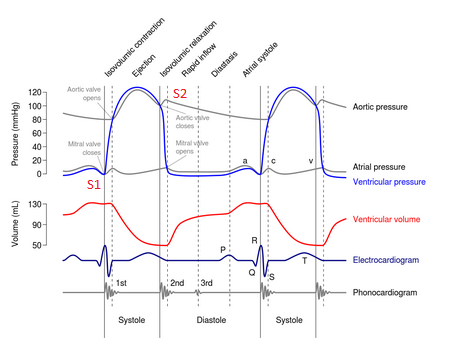How are heart sounds normally produced?
1 Answer
Heart sounds are normally produced by the closing of valves in the heart.
Explanation:
In a healthy patient, there are normally two heart sounds that can be auscultated using a stethoscope on physical exam: S1 and S2.
S1 (lub) corresponds with the closure of the atrioventricular valves during systole. When the right and left ventricles contract (systole), the tricuspid and mitral valves are forced closed producing S1.
S2 (dub) corresponds with the closure of the semilunar valves during diastole. At the transition between the reduced ejection phase and isovolumetric relaxation, pressure in the aorta and pulmonary trunk exceeds pressure in the ventricles, and the momentum of the blood flow decreases enough that the aortic and pulmonic valves close producing S2.
Splitting of S2 can be a normal finding during inhalation. When a patient inhales, pressure in the thoracic cavity falls, which leads to increased venous return to the right side of the heart. The increased blood volume in the right ventricle is reflected by the splitting of S2 into A2 (aortic closure) and P2 (pulmonic closure).
The Wigger's diagram shows the position of each heart sound throughout the cardiac cycle.

Note: S3 and S4 are pathologic heart sounds. S3 is associated with volume overload heard during rapid ventricular filling. S4 is associated with a stiff ventricle heard in late diastole with atrial contraction.

